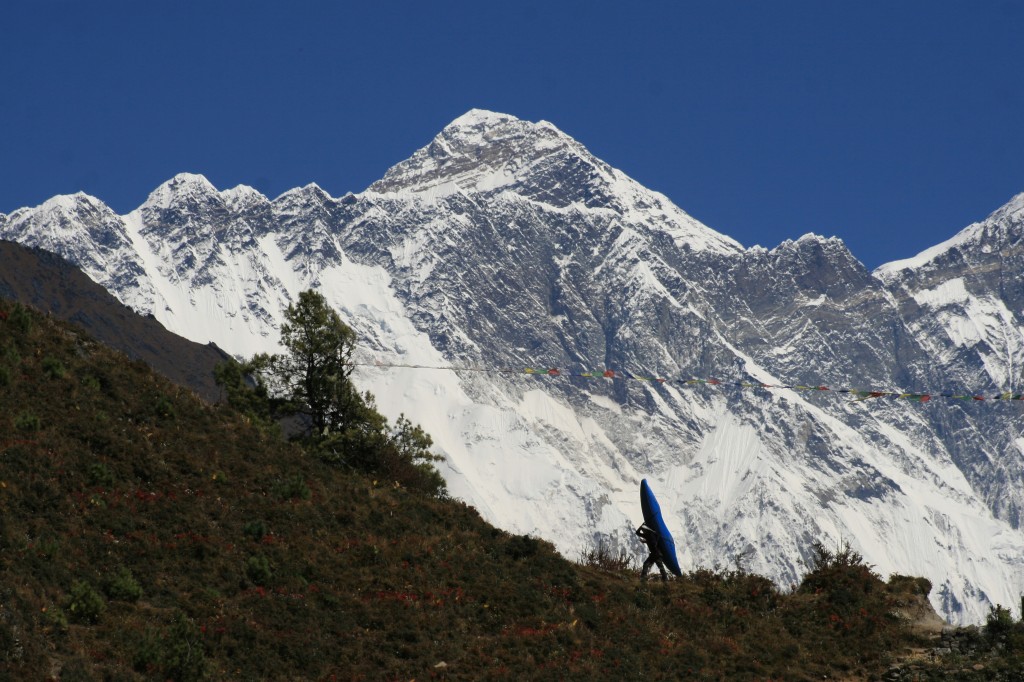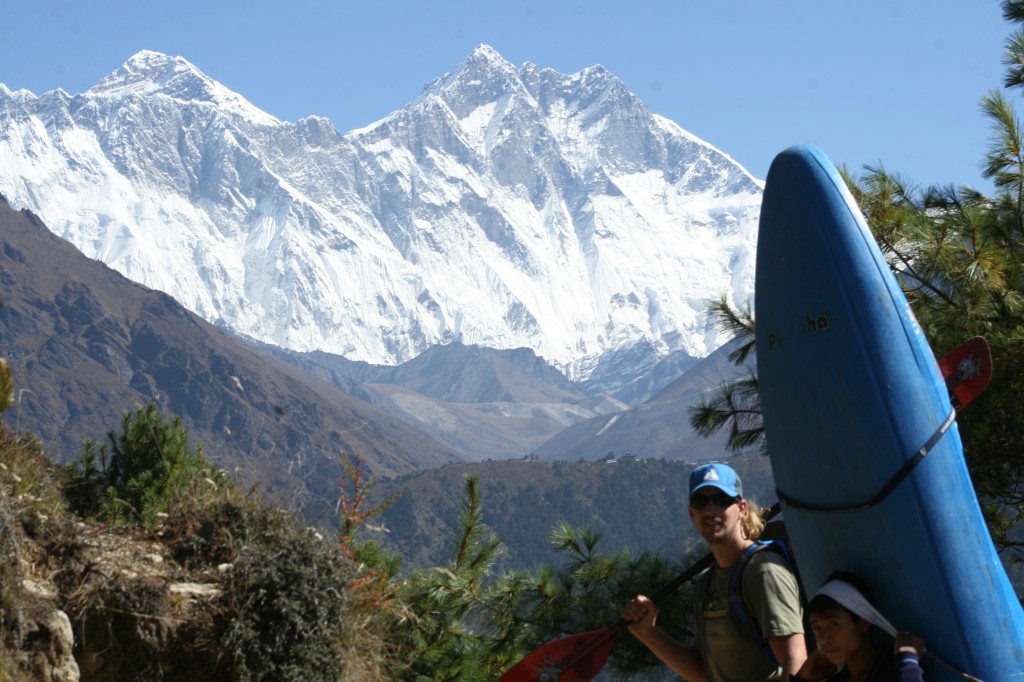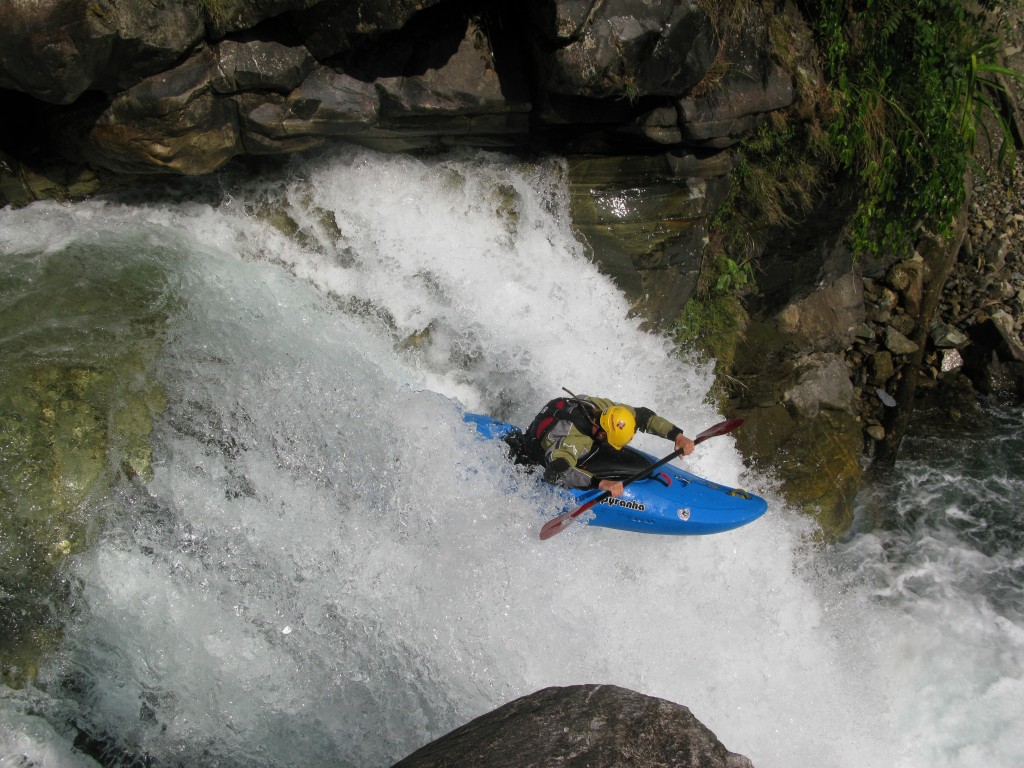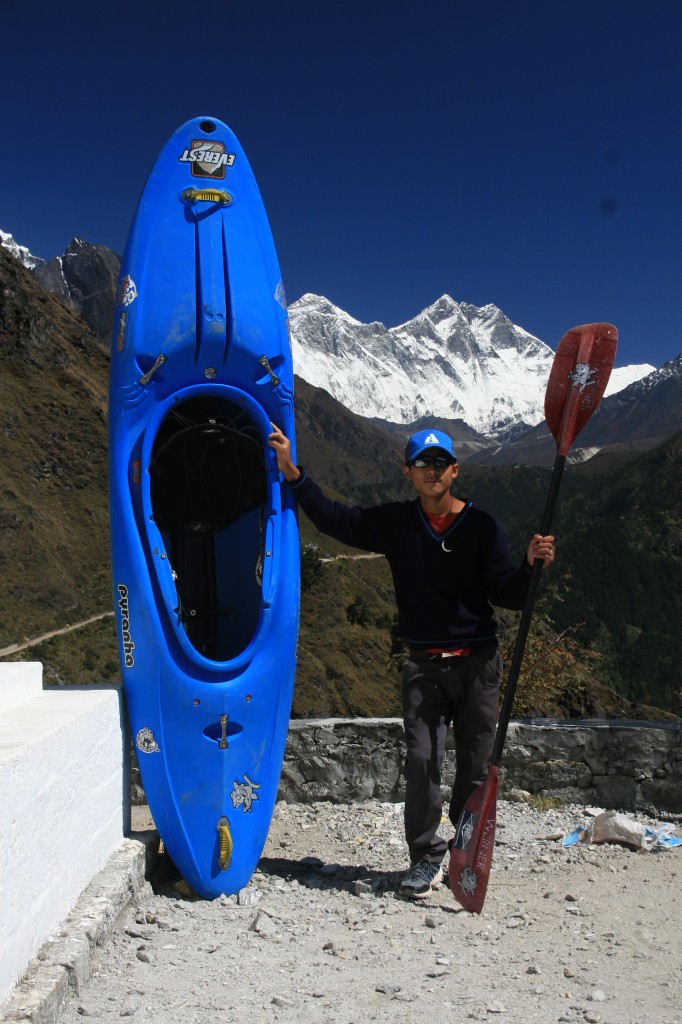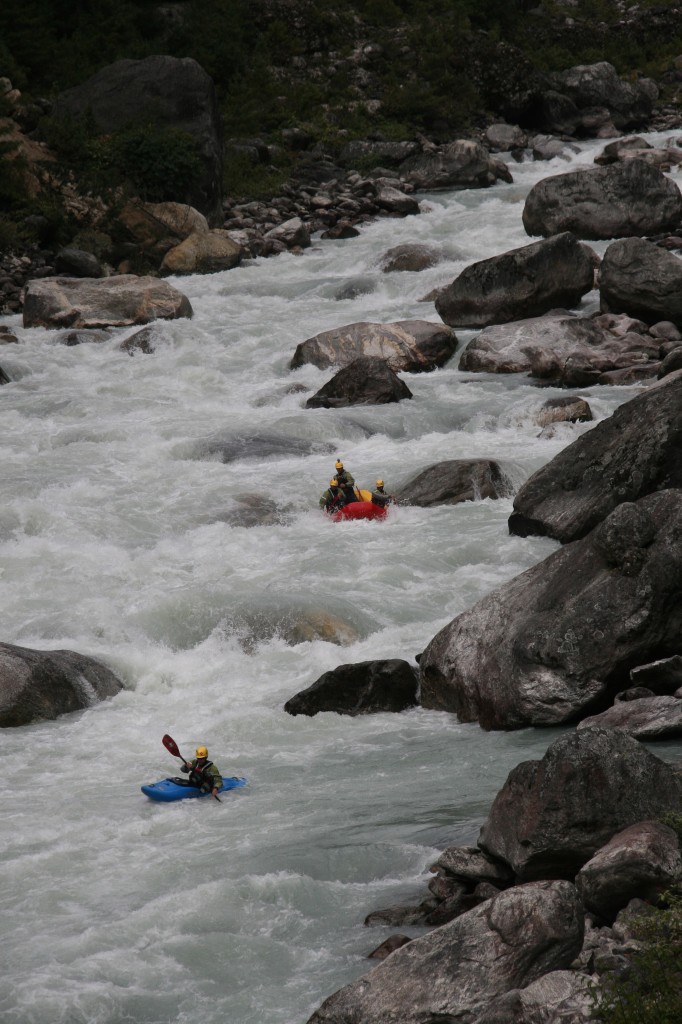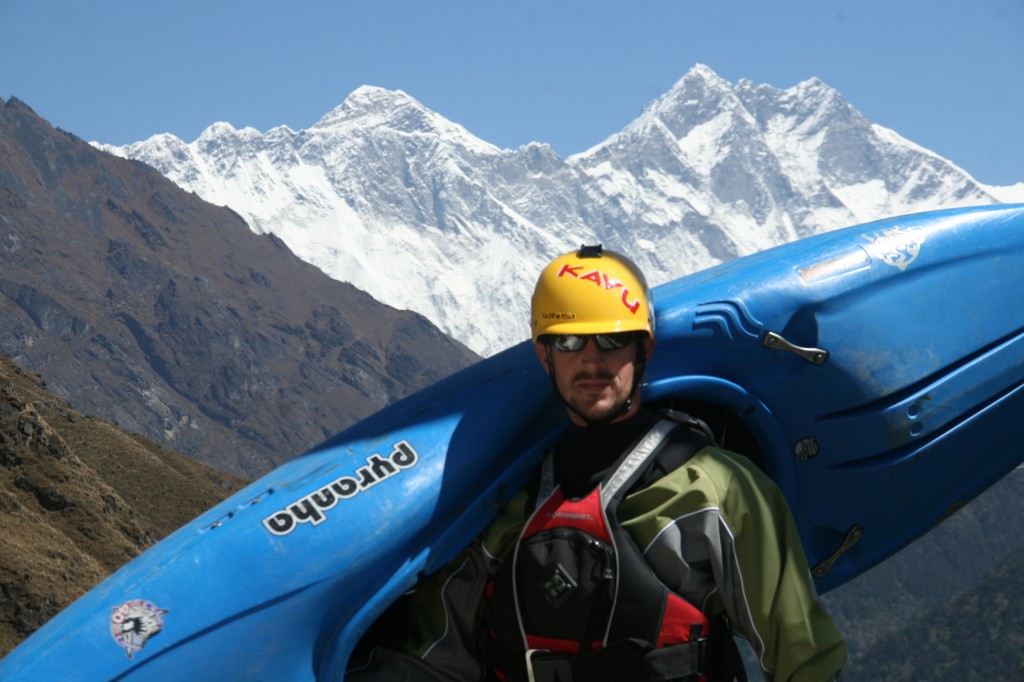My name is Sean Glaccum and I have travelled to the Himalayas almost every fall since 1997 in search of rivers that have never been kayaked or rafted. Past Himalayan first descents include:  First kayak descents off Mt. Kanchenjunga (3rd highest peak), Mt. Cho Oyu (6th highest peak), Mt. Dhaulagiri (7th highest peak) and Mt. Annapurna (10th highest peak). This past fall, a goal that had been set years ago came to reality; to paddle raft the Dudh Kosi river which drains Mt. Everest. As a bonus, we were also able to use the Pyranha Everest kayak.
My expedition team was comprised of 3 rafters: Myself as guide, Dak Helentjaris and Matt Jost as paddle crew on the 13ft Maravia paddle boat and Pat Riffie as Safety Kayaker in the Everest.
The Everest was made in honor of the team led by Mike Jones who made the first kayak descent of the Dudh Kosi in 1976, in 13ft long fiberglass Pyranha kayaks. 35 years later this new Pyranha kayak ran safety for our raft team trying to battle the silty whitewater of the Dudh Kosi. The Dudh Kosi drains the Khumbu glacier which mountaineers climb to summit the tallest mountain on earth, Everest. This was my third visit to the Everest region to run its extremely beautiful rivers. I had recreated the trip the ‘76 team made twice before this trip in my kayak.
After a long flight around the globe from our home in Idaho, we warmed up outside of Kathmandu on the Bhote Kosi River swollen with monsoon rain. Soon we felt adjusted to the Himalayan whitewater and were flown into the Lukla airstrip in a small plane for our hike up the Dudh Kosi. A Sherpa porter named Ang Kami would carry the boat up to 12,000 feet to the put in and four other Sherpa men would split the rafting gear. At seventeen years old and just over one hundred pounds Ang Kami had no problem with the Everest that was twice his size. It was slow going for the porters with the heavy loads on the small exposed trail.  We also had to bribe the park officials to let the kayak into the park since extreme sports had been banned from entering just a few years before. Lucky for us contacts from my previous trips helped make it possible to make an exception for our team.
Once on the water the river was much higher than the two previous times I had run it due to this year’s very late monsoon. The power of the silt laden whitewater was tough on our nerves and I was thrown from the raft only a few minutes after putting on. Pat in the safety kayak darted through the waves, holes, and rocks looking after us rafters describing the Everest as a battle tank!  The most difficult part of paddling any craft in the Everest region besides the tough whitewater is the altitude. After just a couple of paddle strokes you can feel the oxygen being depleted from your blood making for an exhausting experience. Pat would say the Pyranha was making boofing and catching eddies so easy that he was able to hold on to valuable energy that his rafting friends were not finding so easy to hold on to.
Every eddy that the raft had to catch took all we had because of the powerful current but safety Pat would always be sitting there ready to catch us if we had issues. Rapid after rapid our team pushed our way down river, dawn till dusk. At night we would feast on a special Nepalese rice and vegetable dish called Dal Bhat and hot spicy Tibetan momos. Each morning we would be stirred awake by the roar of the Dudh Kosi bouncing off the steep river canyon walls. Many of the rapids were several hundred meters long with multiple must make moves and little time in between drops for stopping. Scouting each long rapid took lots of time and energy with a few drops being too choked with boulders, forcing us to portage.
The last time I had run this section we had no portages. But after a “G.L.O.F†(glacier lake outburst flood) that came off of the flanks of Ama Dablam (6856m) in 2008, the river bed was scoured with the high volume flood and many house and car size rocks were pushed and shoved around to change the Dudh Kosi immensely. After almost two weeks pushing our skill in this remote Himalayan setting we completed our goal to raft the high altitude river that drains the highest mountain on the planet. The Everest would prove to be the perfect Himalayan kayak on not only on the Dudh Kosi but on five more expeditions in the next two months of travel. Empty, loaded to the hilt, hucking waterfalls, or dragging swimming rafters through heavy whitewater, there was no doubt it was a whitewater machine! On the trip we all took a turn paddling it and could not have been more pleased with our craft of choice for keeping us safe. In the next kayak expedition you can be sure the Pyranha Everest will be the first thing on my gear list.
Sean Glaccum




